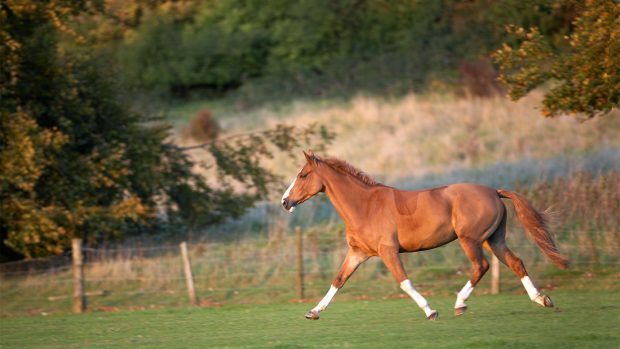The main problem that occurs in osteoarthritis is the damage and loss of the cartilage, which covers the ends of the bones in the joint. The function of cartilage is to allow low friction movement between bones. Loss and damage of this vital tissue leads to pain and a failure of the joint to function correctly.
The body is unable to heal and repair cartilage damaged by joint disease, partly because of the loss of specialised cartilage cells, known as chondrocytes. The cells that remain are damaged and unable to produce tissue of sufficient quality for effective repair.
In some cases, modern medicines and an effective balance between exercise and rest can see a horse return to some level of work. Unfortunately, the level of work is usually less than prior to the onset of the disease, commonly leading to the end of the horse’s competitive career.
New techniques
For many years, there has been interest in techniques that can enable cartilage to heal and produce a tissue that can withstand normal work.
Techniques to improve healing in joints, where there has been loss of articular cartilage, have involved methods of allowing specialised cells to enter the joint from the underlying bone. These new cells act as undamaged cartilage cells, which can produce quality tissue to heal any damage.
Initial techniques involved drilling into the affected bone, but in recent years a technique called “micropicking” has been developed, which allows the formation of many small holes in the bone, through which the cells can pass.
While some of these methods have shown promise, none has proved the ultimate solution for osteoarthritis.
Cartilage transplantation
More recently, a number of procedures have been developed that involve transplantation of cartilage from a donor site to within the affected joint. In some cases the transplant will include some of the underlying bone.
These transplant techniques place a considerable amount of cartilage tissue into the damaged area as well as replacing the vital reparative cells, which have been lost.
Unfortunately there are drawbacks. Cartilage is a valuable commodity in the horse and harvesting it for transplantation may cause problems at the site from where it was taken. Cartilage can be taken from a horse that has recently died but this may lead to rejection of the tissue by the recipient.
While cartilage transplantation does contain considerable promise, there are many hurdles to be overcome before this can become a routine treatment.
Cell transplantation
The final techniques that are currently being developed are methods of cell transplantation. If the special cartilage cells can be replaced, then it is likely that the damaged cartilage will heal.
While it is possible to harvest cells from a horse that has died, it is always best if the cells come from the same horse. Therefore, two techniques have been developed.
One is to harvest a small amount of cartilage from the affected horse, extract the cells in the laboratory, and over several weeks the cells can be grown in number before being implanted back into the diseased joint.
The other technique is to use stem cells. These are amazing cells that can be harvested from the bone marrow of horses (using sedation and local anaesthetic) and grown into cartilage cells in the laboratory. Once fully developed the cells can be placed into the joint and lead to repair.
We are still learning about how stem cells achieve this varied role, but they hold a great deal of promise as treatments for a large number of currently incurable disease.
Although these techniques are still in the experimental stage, they are beginning to be used to treat horses that previously would have had to be retired due to osteoarthritis. However, there are some forms of osteoarthritis that are likely to remain incurable.



